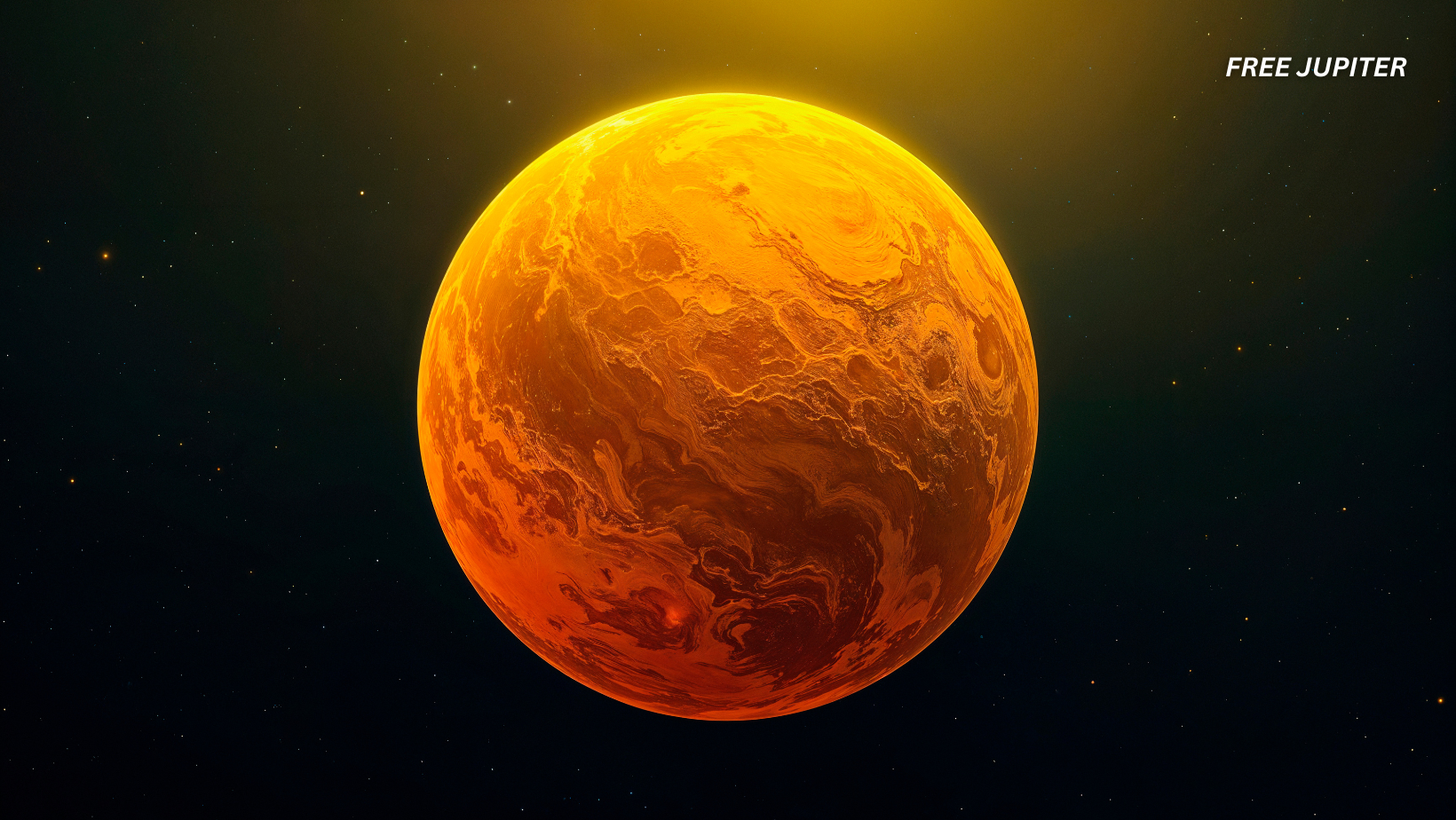Friendly Note: FreeJupiter.com shares general info for curious minds 🌟 Please fact-check all claims—and always check health matters with a professional 💙
Venus is often called Earth’s twin, but that comparison is more of a cruel joke than a compliment. At first glance, the two planets seem similar—both are roughly the same size, made of rock, and orbit relatively close to the Sun. But where Earth is a thriving oasis, Venus is a blazing inferno wrapped in poisonous clouds. Temperatures soar high enough to melt lead, its atmosphere is 90 times denser than ours, and sulfuric acid rains down from the sky.
Despite these nightmarish conditions, humanity has actually managed to land spacecraft on its surface. They didn’t last long—minutes at most—but during their short lives, they captured history’s first photographs of another planet’s ground. The achievement belongs to the Soviet Union’s Venera program, which remains one of the most daring planetary exploration efforts ever attempted.
A Planet Beautiful but Deadly
Venus has fascinated humans for centuries. It is one of the brightest objects in the night sky, often appearing as the “morning star” or “evening star.” To ancient civilizations, it was both a goddess and a mystery. But telescopes eventually revealed that this dazzling world was cloaked in thick clouds, hiding its true nature.
For a long time, scientists imagined Venus as a lush jungle planet—perhaps with steaming swamps or oceans beneath the haze. Science fiction writers even dreamed up strange creatures wandering its surface. But by the mid-20th century, new observations hinted at a harsher reality. Radio measurements revealed extreme surface temperatures, and scientists began to suspect that Venus was less a paradise and more a furnace.
The planet’s atmosphere is mostly carbon dioxide, with clouds of sulfuric acid droplets. This combination creates a runaway greenhouse effect, trapping solar heat and pushing the temperature to around 465°C (900°F)—hotter than Mercury, even though Venus is farther from the Sun. The air pressure at the surface equals what a submarine experiences a kilometer deep in the ocean. Add in acidic rain and constant storms, and you have one of the most unforgiving environments imaginable.
Yet, the Soviet Union decided to go there anyway.
Read more: Scientists Say Ceres May Have Been Habitable 500 Million Years After Forming
The Birth of the Venera Program
In 1961, at the height of the space race, the Soviet Union launched the Venera program—the first dedicated effort to explore Venus. At that time, every mission to another planet was uncharted territory. Rockets were unreliable, communication technology was primitive, and the engineering required to build a lander that could survive on Venus bordered on impossible.
The first six missions (Venera 1 through 6) were plagued with problems. Some failed to leave Earth’s orbit, others lost contact en route, and a few entered Venus’ atmosphere only to be crushed or destroyed before sending useful data.
Still, these attempts weren’t wasted. They taught engineers how to build tougher spacecraft, and they gave scientists the first real atmospheric measurements of Venus.
- Venera 3 (1966): became the first human-made object to crash into another planet, though it failed to transmit data.
- Venera 4 (1967): successfully measured atmospheric pressure, density, and composition while descending. It confirmed that Venus was smothered in carbon dioxide.
- Venera 7 (1970): a breakthrough mission that became the first spacecraft to land softly on another planet and transmit data, surviving for 23 minutes.
- Venera 8 (1972): studied surface rocks, suggesting they were similar to granite found on Earth.
These early missions set the stage for the boldest attempt yet: to not only land on Venus but to actually take photographs of its surface.
Venera 9 and 10: The First Photographers on Venus
In 1975, the Soviets launched Venera 9 and Venera 10. These landers were equipped with cameras, designed to peek through the suffocating atmosphere and show humanity what Venus actually looked like.
Landing on Venus is no small feat. The spacecraft had to withstand scorching heat, crushing pressure, and acid clouds during descent. Against the odds, both landers made it.
- Venera 9 survived just 53 minutes before being destroyed, but in that brief window, it transmitted the first black-and-white photographs ever taken from the surface of another planet.
- The images shocked scientists. Instead of a blurry haze, they revealed a desolate, rocky plain with jagged stones and lava-like formations. It looked alien, yet strangely familiar—almost like a barren desert on Earth.
- Venera 10, arriving days later, did the same. It too succumbed quickly, but not before capturing more snapshots of Venus’ eerie landscape.
These photographs remain some of the rarest in space history. To this day, only four spacecraft have ever managed to take images directly from Venus’ surface.
Read more: Simulation Showing The Speed of Voyager 1 at Ground Level Is Almost Unbelievable
Later Missions: Color Images and Radar Maps
The Soviets pressed on. In 1981, they launched Venera 13 and 14, which carried more advanced instruments and cameras. For the first time, Venus’ surface was revealed in color photographs.
The images showed cracked, rocky terrain under a hazy orange sky. The rocks appeared basaltic, similar to those formed by volcanic activity on Earth. These landers also performed chemical tests on the soil, confirming the volcanic nature of Venus’ crust.
By 1983, the Soviets shifted strategy. Instead of trying to survive the surface, Venera 15 and 16 orbited Venus and used radar to pierce the thick clouds. They produced the first detailed maps of the planet’s northern hemisphere, revealing mountains, valleys, and vast volcanic plains.
Finally, the Vega missions (1984) combined Venus exploration with a flyby of Halley’s Comet. Ingeniously, they released both landers and balloons into Venus’ atmosphere. The balloons floated for nearly two days, drifting across the skies and collecting valuable data on winds and cloud patterns.
Why Venus Destroys Spacecraft
Why did the Venera landers melt so quickly? The answer lies in Venus’ extreme conditions:
- Heat: At nearly 900°F, the surface is hot enough to weaken metals and fry electronics within minutes.
- Pressure: Equivalent to being one mile underwater, it can crush landers not designed to withstand it.
- Acid Clouds: Though the rain evaporates before hitting the ground, the atmosphere itself is corrosive.
The Soviet engineers built their landers like armored tanks, with pressure-sealed hulls and cooling systems. But even with all that, survival times rarely exceeded two hours.
Reconstructing the Lost Images
The original Venera photographs were grainy and distorted. But decades later, enthusiasts and scientists have painstakingly restored them.
One of the most notable efforts comes from Ted Stryk, a philosophy professor with a passion for space imagery. Using raw data from the Russian Academy of Sciences, Stryk digitally reconstructed the clearest versions of the Venera panoramas. The results are haunting: cracked, desert-like plains under mustard skies.
American researcher Don P. Mitchell also played a crucial role in reprocessing the original Soviet data, ensuring that the ghostly snapshots of Venus would not be lost to history.
Modern Missions and Renewed Interest
For decades after the Venera program, Venus exploration slowed. NASA, ESA, and other agencies focused instead on Mars, which seemed more hospitable and promising for signs of life. But recently, Venus has returned to the spotlight.
- NASA’s DAVINCI+ (planned 2030s): Will send a probe through the atmosphere to study its chemistry in detail.
- NASA’s VERITAS: Will orbit and map Venus’ surface using radar, similar to Venera 15/16 but with modern technology.
- ESA’s EnVision: A European mission designed to study geological activity and atmosphere.
- India’s Shukrayaan-1 (upcoming): India’s first Venus orbiter, aiming to explore the atmosphere and surface.
These missions aim to answer big questions: Did Venus once have oceans? Was it ever habitable? And why did it turn into a planetary oven while Earth thrived?
Read more: Scientists Create Plastic From Grapevine Waste That Breaks Down in Only 17 Days
The Legacy of Venera
The Venera landers didn’t live long, but they left a lasting mark. They were the first to land on another planet, the first to photograph an alien landscape, and the only ones to ever return images from Venus’ surface.
In their short lives—sometimes measured in mere minutes—they gave humanity a direct view of a world once thought to be a paradise but revealed to be a fiery wasteland.
Until new missions arrive, those rare Soviet snapshots remain our only window into the face of Earth’s hostile twin.










